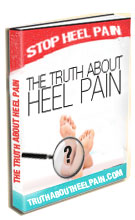What causes heel spurs and why they make your heels hurt
Heel spurs and plantar fasciitis are often synonymous with each other. That is because the pain tends to come from the same area in both cases, but the conditions are not the same. Plantar fasciitis is the inflammation of the connective tissue along the bottom of the foot, and a heel spur is an outgrowth of bone that causes pain. Although you can have both at the same time, it is quite possible to have one and not the other. A heel spur can sometimes have no symptoms at all, if it is smooth and in a place that does not bear weight. However, some heel spurs are sharp and on the sole of the foot, and this can cause an excruciating amount of discomfort.
Symptoms
The most common symptom of a heel spur is pain on the bottom part of the foot near the heel. Although it is associated with pain and plantar fasciitis, only one in ten people have heel spurs, and of those people, one in twenty have pain associated with them. With that in mind, heels spurs do not have to cause pain to be present, and the treatment for spurs and plantar fasciitis differs. Most of the time, the pain from heel spurs occurs early in the morning upon waking or after sitting for a long period of time. On x-ray, a doctor will see a sharp, bony prominence coming off the heel bone at the site of reported pain.Causes
To make matters more confusing, a heel spur can actually cause plantar fasciitis, and this may be the reason the two conditions are so closely linked. The heel spur can cause tearing of the plantar fascia, and this can cause inflammation and pain in the area. The plantar fascia can also pull at the insertion site on the bone, and this repetitive stress can cause a bony outgrowth to appear. Other causes include arthritis, unnatural overgrowth of bone (diffuse idiopathic skeletal hyperostosis), and Reiter’s disease. Obesity, standing on hard surfaces, and constant pounding on your feet from activities such as marathon running can increase your chances of having a heel spur.Treatments
Heel spurs are usually treated in the same way as plantar fasciitis. The key to effective treatment is to decrease the amount of inflammation in the tissue around the heel spur. The easiest way to decrease pain is to apply ice to the heel. Non-steroidal anti-inflammatory drugs (NSAIDs) that are available over the counter are also used to help reduce pain and inflammation. Occasionally, you may need to have a steroid injected directly into the inflamed tissue of the foot for any relief to occur. Losing weight, stretches, night splints, and shoe inserts, or orthotics, are other ways that you can help cure your heels spurs without resorting to surgery. Particularly helpful are heel cups that cushion the plantar fascia insertion point and keep the spur from irritating surrounding tissue. Infrequently, surgery may be necessary to remove the spur if other measures are unable to adequately control the inflammation.Start your treatment immediately
There are many factors the cause heel pain and plantar fasciitis. It is important to identify what are the factors (like body weight, shoes, muscle tightness ect..) that can cause your heel pain. Unfortunately no 2 people are the same so what has worked for some will not work for others. Fortunately we have put together an ebook that can assess your risk factors and guide you through your plantar heel pain and plantar fasciitis treatment today.Start your heel pain treatment today.
